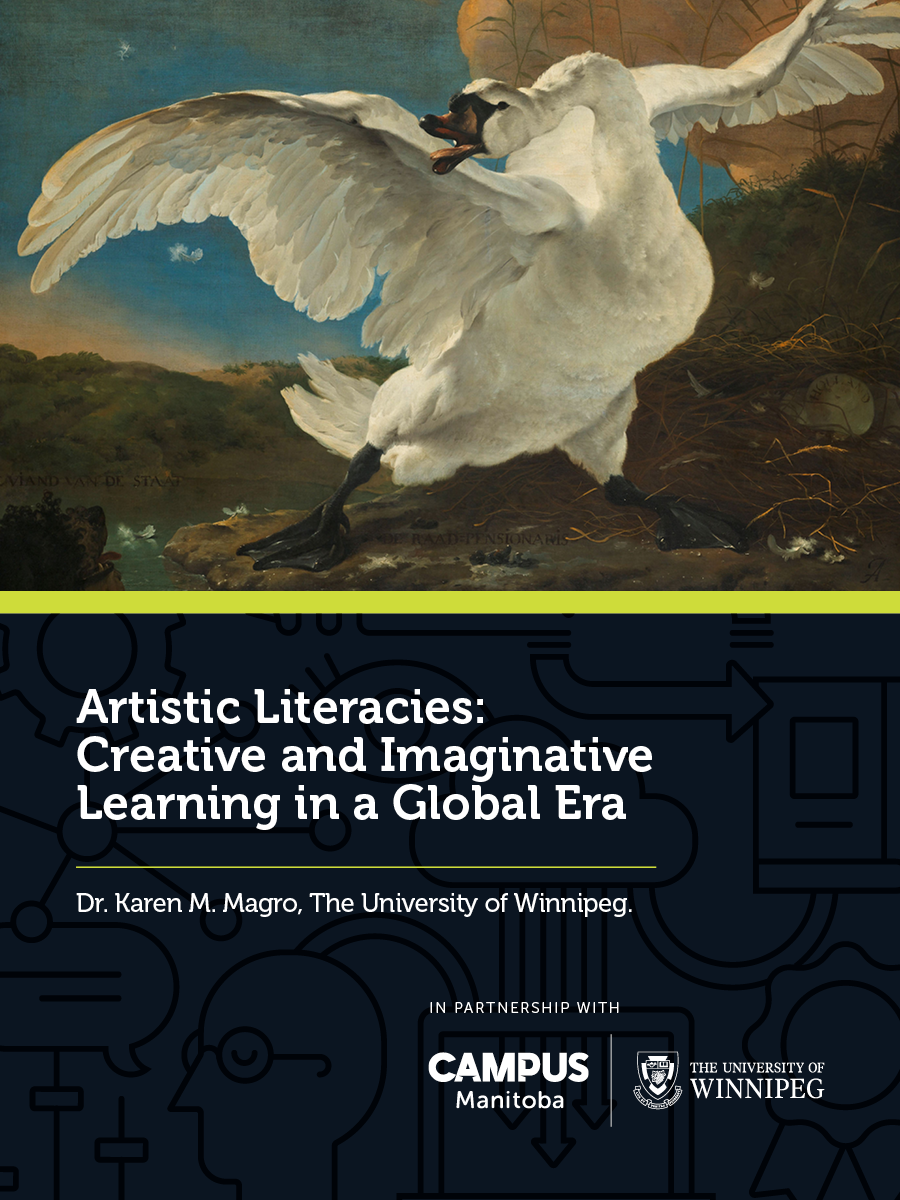Book Title: Artistic Literacies: Creative and Imaginative Learning in a Global Era

Contents
Book Information
Book Description
This book Artistic literacies; Creative and Imaginative Learning in a Global Era provides a theoretical and practical base for understanding the value of integrating artistic images in teaching English language arts and related disciplines. I take the position that multi-modal literacies enrich and deepen our understanding of texts in ways that can potentially empower and inspire. Transcultural and interdisciplinary learning are vital in an increasingly connected and complex world. The ability to understand, decode, negotiate, and interpret art images is an essential skill in a digital and visual culture. While many of the chapters have relevance to Senior High educators specializing in English language arts, psychology, history, and environmental education, educators across different disciplines and at different levels can find value in applying visual arts in their work. Creative learning and transformative learning can be developed through Artistic Ways of Knowing (AWoK). Artistic ways of knowing evolved out of different theories of multiple ways of knowing and multimodal literacies ( Gardner, 1983; Kalantzis & Cope, 2012; New London Group). Artistic ways of knowing refer to skills, competencies, and knowledge in artistic disciplines such as visual art ( sculpture, photographic, graphic arts) drama, storytelling, creative writing, music, dance, and other expressive arts. Artistic ways of knowing extend knowledge to include a greater awareness and valuing of affective knowing, spiritual dimensions of knowing, and imaginative and symbolic ways of knowing (Gardner, 1983, New London Group, 1996). Learners can also develop skills in interpreting, applying, and expressing one modality of learning to another communicative modality (e.g. a written poetic text can be inspired visual details in a painting). Multimodality is a theory that explores the way oral, written, gestural, tactile, and spatial /visual ways of knowing are interconnected (Kalantzis & Cope, 2012).
A major focus in this book is to highlight the complementary dynamic between visual art and written texts. One form of art can illuminate and inform another to include “the stimulation of imagination and perception, a sensitivity to various modes of seeing and sense making, and a grounding in the situations of lived life” (Greene, 1995, p. 138). Frank Serafini (2014) identifies four processes that individuals use to interpret and analyze visual images and multimodal texts: 1) perception, 2) representation, 3) interpretation, and 4) ideology. He explains that our personal histories as well as socio-cultural factors influence our perception and interpretation of different modalities. “Our experiences and perceptual apparatus serve as lenses through which we experience the world….Perception and interpretation are not separate mental operations, but rather thoroughly interconnected social processes, and any approach to understanding visual images or multimodal texts must acknowledge this interconnection” (Serafini, 2014, p. 32). Visual thinking skills, for example, can help learners create visual metaphors for complex themes and plot twists in a novel or drama. This book will provide examples and resources to help navigate analyzing and “reading” varied artistic texts.
This book includes theoretical analysis of the way artistic literacies can encourage creative and imaginative thinking.
License
Artistic Literacies: Creative and Imaginative Learning in a Global Era Copyright © 2024 by Karen Magro is licensed under a Creative Commons Attribution-NonCommercial 4.0 International License, except where otherwise noted.
Subject
The Arts

